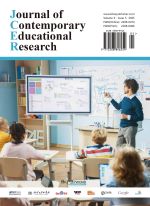Abstract
With the rapid development of new quality productivity and the in-depth advancement of digital transformation, vocational college libraries, as important supporting institutions for teaching and research, are facing the dual challenges of service model transformation and capacity improvement. Based on the changes in the demand for digital academic services under the background of new quality productivity, this paper systematically analyzes the current situation and problems of the digital academic service capabilities of librarians in vocational colleges, constructs a capability model including four dimensions: cognitive attitude, knowledge reserve, skill application, and communication and sharing, and proposes capability improvement strategies from aspects such as organizational incentives, professional training, service innovation, and technical support. Research shows that librarians in vocational colleges need to comprehensively enhance their digital academic service capabilities through paths such as concept renewal, skill strengthening, service transformation, and environment optimization, in order to adapt to the demands of educational reform in the era of new quality productivity.
References
Yang X, 2024, Strategies for Enhancing Digital Academic Service Capacity of University Librarians. Library Work and Research, (3): 45–51.
Guo X, 2024, Strategies for Enhancing the Digital Academic Service Capacity of University Librarians. Journal of Henan Library, 44(7): 70–73.
Zhong XH, 2022, Strategies for Enhancing the Comprehensive Competence of University Librarians under the Background of Big Data. Social Science Research, (8): 71–73.
Tian YL, 2023, Research on the Quality Improvement of University Librarians in the Big Data Environment. Library Management, (7): 181–182.
Yan J, 2022, Research on Enhancing the Service Capacity of Librarians in University Libraries. Inner Mongolia Science and Technology & Economy, (17): 156–157.
Liang YX, 2024, Research on the Informationization Development Strategy of University Libraries. Science and Technology Information, 22(3): 189–191.
